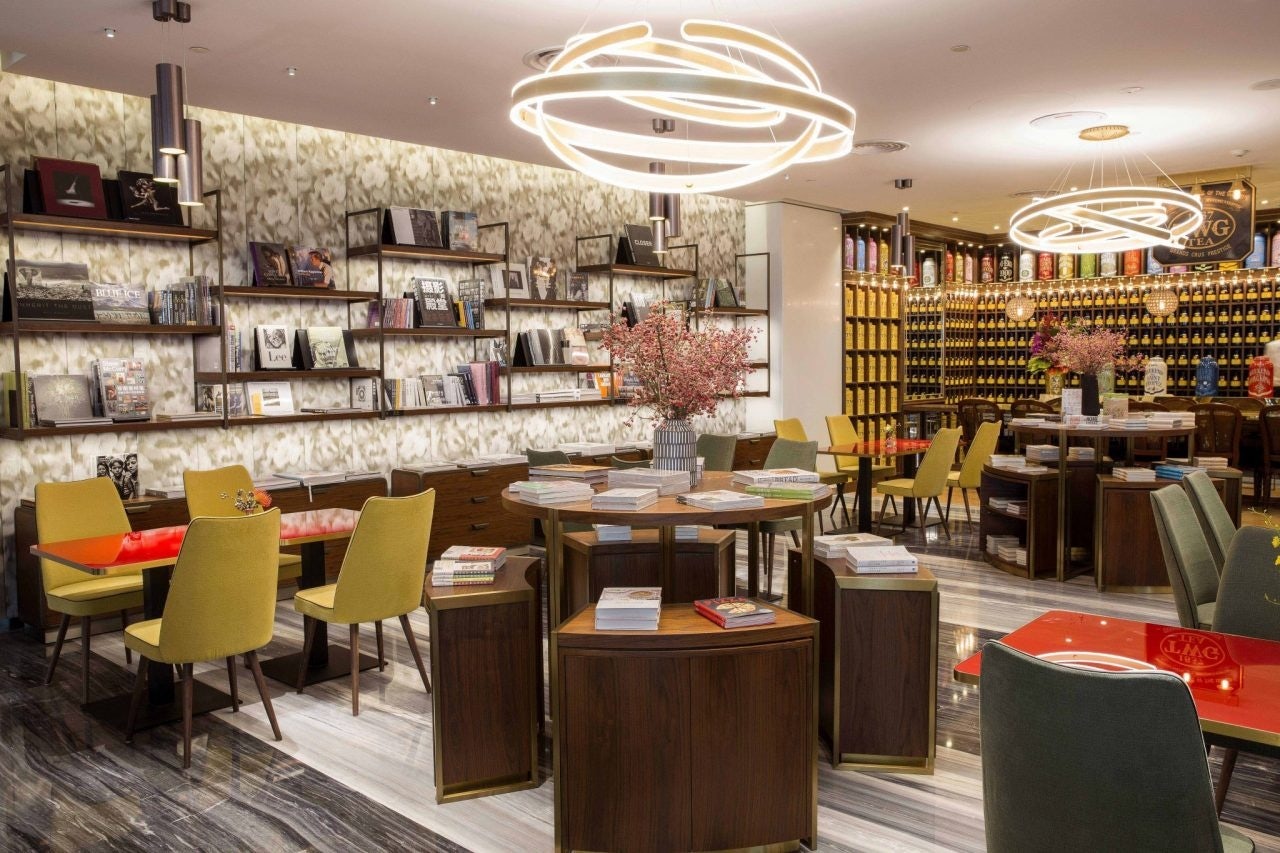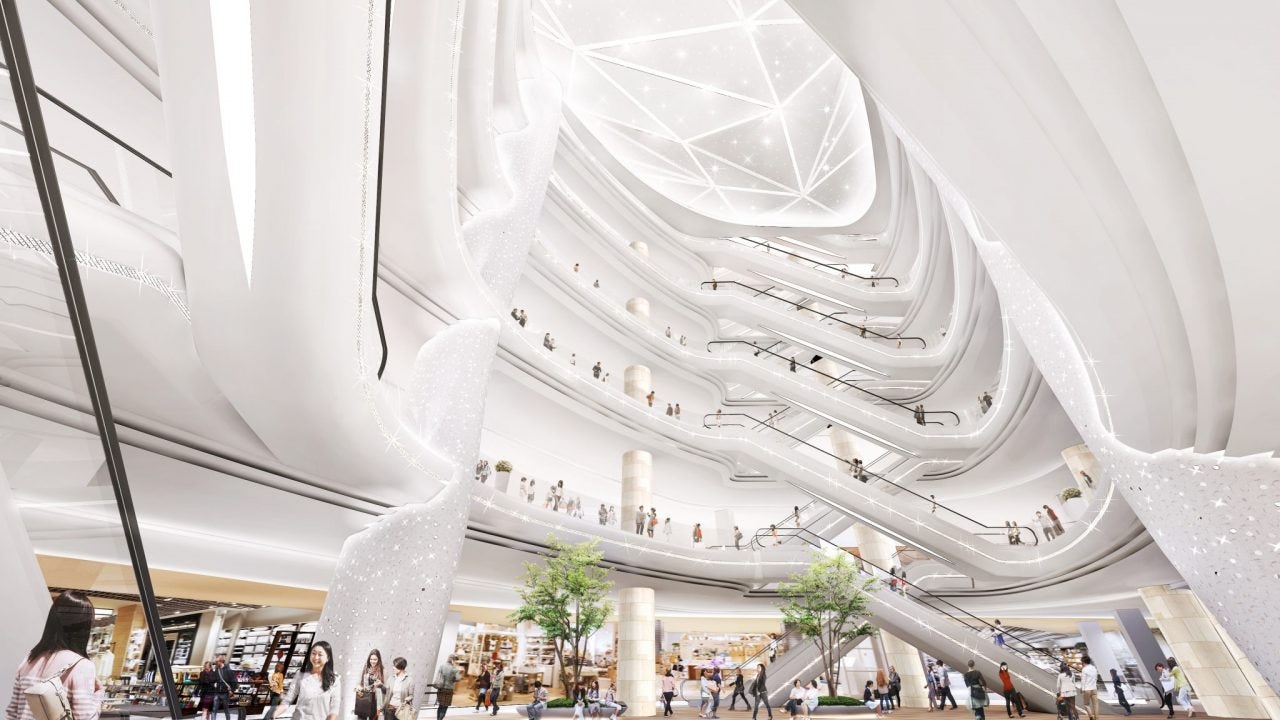Chinese shoppers are buying more luxury goods in their home country. While price harmonization and the crackdown on daigou have played a big role in this shift, there’s another factor bringing more customers into stores: design.
Bain & Company released a report yesterday citing the importance of design in the coming year for high-end brands as the domestic luxury market sees strong growth. Stores that succeed in this environment are those bringing passersby “fresh elements and inspirational designs” in their shop windows and working with malls to improve customer experiences.
Flagship store design is an important part of the equation, but mall developers have also embraced “retailtainment” to drive foot traffic. Some of the results of this have been headline-making (think Printemps’ five-story slide in Shanghai), but for malls that deal almost entirely with luxury, changes are usually more subtle. Challenges for developers in this segment are numerous, and include staying on brand, bringing in new and aspirational customers, and balancing dynamism while sophistication.
Among these transformations is one of China’s leading luxury malls, state-owned SKP Beijing, which has been working to transition its positioning as a “mall” into a “department store.” Its ultimate goal: to put itself on the map as being one of the top luxury department stores in the world.
“It was a tall order,” says Torquil McIntosh, co-founder of Sybarite, the London-based architecture firm that has been working with SKP since 2013 to refurbish its retail space after beating out other companies in a contest. “It started off as a mall and it was quite generic, a drab space, and quite heavy and imposing. SKP needed to be a place where customers could have a genuine experience.”
To deliver that, Sybarite began by updating the brand’s logo to what they now call the “SKP Curve” and working to incorporate it into the architecture. They opened up the facades of the luxury brand stores to make them less imposing and created more space for customers to meander. And while restaurants are a major component of the retailtainment strategy, the food court offerings at SKP weren’t really in the right spot for serving the target customer—office workers in the adjacent buildings weren’t bothering to walk through a huge high-end mall to get to their favorite fast-food chains. So Sybarite worked with SKP to move them closer to the subway station in the basement.
Even the more high-end aspects of retailtainment don’t work in every market. That’s why 10 Corso Como, an Italian upscale fashion and restaurant space that was formerly a staple of SKP, was replaced by a new, recently unveiled SKP-branded lifestyle store, Rendezvous. It’s located at the south end of SKP where many of the luxury labels are.
“It’s a very sophisticated end of the building but it’s subsequently naturally very quieter,” McIntosh said. “We wanted to draw energy to the end of the building to encourage customers who wouldn’t necessarily go to that part to actually venture in.”
With a bookstore serving as its backbone, Rendezvous features a café and a cheese station where chefs make their own mozzarella, a tea room, and a wine bar and cellar. Each area of the fourth-floor hall is subtly separated by different light fixtures, giving customers the feeling of intimacy while also providing a scalable solution for future Rendezvous projects.
“When I was last there, I was really delighted to see how Rendezvous was being used,” McIntosh said. “I look back on 10 Corso Como, and it was pretty much empty all the time, … but every part of Rendezvous was being used by different types of people.” These include some of the leading figures in China’s luxury and aspirational community, like entrepreneur Sara Jane Ho, who recently brought an audience to the space for her book signing.
This isn’t the first time Sybarite has worked on projects in China. Founded in 2002, the firm first started working with small monobrands and eventually expanded to entire department stores around the world. Its China portfolio includes Marni flagships in Beijing and Shanghai, as well as London-based luxury fashion basics brand, Joseph in Beijing’s Taikooli North.
McIntosh said working in the more modern, contemporary environment China’s developing cities have to offer his architecture firm has been “a massive breath of fresh air” from the constraints of working in more historical parts of Europe. With SKP in particular, the approach has been vastly different from what many architects might be used to. McIntosh needs to be open to changes, and lots of them.
“There’s the idea that it’s a living building, which we’re very happy to play around with and let it evolve naturally, rather than draw a line in the sand and say, ‘refurbishment is done, let’s move on to the next project,’” he said, explaining that they amend plans based on consumer behavior in spaces they have completed. “It’s a step ahead so that when the consumer is ready to change, they’re already there doing it. … That’s what I love. I don’t think you really get that in many other parts of the world.”
The efforts have already translated into sales, according to McIntosh—since redoing the watches gallery on SKP’s ground floor, he sas sales have increased “ten-fold”. The company is continuing its renovation project with the fifth and sixth floors of the building and is also soon going to unveil SKP’s second China location, in Xi’an.
SKP Xi’an is located in what was originally designed to be a convention center, and stands 19 stories tall. The façade itself is as big as a small airport, McIntosh said. The main challenge here was to scale it down and make it feel more human. “As a customer, you don’t want to have that feeling of oppression in the architecture.”
The new Xi’an department store, which will also feature a Rendezvous lifestyle space, is set to open to shoppers this summer, and Sybarite has other projects in the works, too. No matter what they are though, Sybarite’s efforts illustrate how important visuals are becoming for the customer experience in China—even outside the luxury flagship store.
“When the customer is taking a selfie in SKP, what you want is for the architecture to be recognizable as SKP rather than looking like you’re in a generic mall,” McIntosh said. “So hopefully we’ve created a branded environment that immerses you in that SKP world.”




